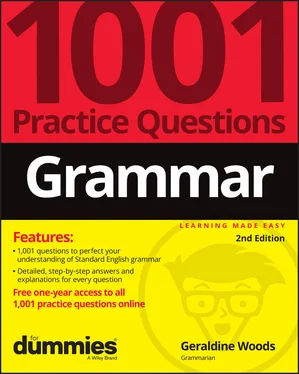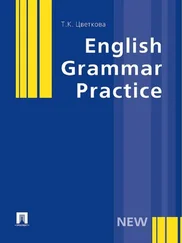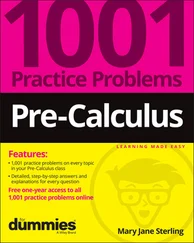Much has changed in the world of pronouns since I wrote the first edition of 1001 Grammar Questions For Dummies. Change is not always comfortable, but it's here and, I believe, necessary and good.
Let me explain. A pronoun is a word that stands in for a noun or another pronoun. Pronouns streamline language, allowing you to say “George said that he forgot his phone” instead of, “George said that George forgot George's phone.” A pronoun is supposed to match, or agree, with the word it refers to: singular pairs with singular, plural with plural. Gender also matters. Some pronouns are masculine ( he, him, his ), some are feminine ( she, her, hers ), and others are neuter ( it, they when referring to objects, ideas, or places). The rules for these pronouns have stayed the same. Ditto for gender-neutral pronouns referring to a group ( they, them, their, theirs ).
The rules have shifted, though, when you refer to one person whose gender is unspecified—a person or a senator or an insurance agent , perhaps — or to a person who does not identify gender as binary (male or female) or who identifies as gender fluid. For more and more grammarians and editors, they, them, their, and theirs have become the preferred pronouns for these situations. In other words, these pronouns may be either singular or plural, depending on the word they refer to. Take a look at some examples:
Someone forgot their homework; therefore, the teacher will give them a failing grade. (pairs the singular pronoun someone with the singular pronouns their and them )
Each applicant should explain their reasons for leaving their previous job. (pairs the singular noun applicant with the singular pronoun their )
Alix arrived late because they were stuck in a traffic jam. (pairs the singular noun Alix , the name of a person who identifies as nonbinary, with the singular pronoun they )
It's worth noting that this “change” in the usage of they, them, and their in the first two examples is actually a return to tradition. From the 14th century onward, ordinary people, as well as great writers (Chaucer, Shakespeare, and Austen, to name three) treated they, them, and their as flexible, gender-neutral pronouns, a grammatically correct way to refer to one person or a group, just as the pronoun you does. In the 18th century, though, influential grammarians declared that the pronouns they, them, their, and theirs were correct only for references to a group. According to these grammarians, the forms he, him, and his and she, her, and hers were the only appropriate references to one person. If the gender was unknown, masculine pronouns were said to be the proper choice. In 1850, the British Parliament went so far as to enact that grammar rule into law! You can imagine how popular this decision was with supporters of women's equality. In the late 20th century, many writers reserved they, them, their, and theirs for plural references but, in an effort to be more inclusive, turned to pairs— he or she, him or her, and his or her — for singular references. That practice often results in sentences like “A student should ask his or her teacher about his or her pronoun policy during the first meeting with him or her.” As you see, providing two choices can result in a clunky sentence! Paired pronouns also ignore people who identify as nonbinary or gender fluid, a situation reflected in the third example.
To solve these problems, the singular they/them/their/theirs entered — actually, re-entered — the picture. And that's why I've employed this usage in the second edition of 1001 Grammar Questions For Dummies , a decision that Wiley, the publisher of Dummies books, supports.
It may take a while to get used to the singular they. If you're expecting one dinner guest and hear “they're on the way,” you may panic and cook an extra portion of pasta before you remember that they is your guest's preferred pronoun, and they would never bring a friend without asking first. You may also find yourself writing for an authority figure who insists on restricting they, them, their, and theirs to plural situations. In that situation, you have some options. You can shift from third person (talking about someone) to second person (talking to the person with the flexible pronoun you ):
If you forget to do the homework, you will receive a failing grade.
You can also reword and avoid the pronoun entirely:
Someone forgot to do the homework and will receive a failing grade.
Each applicant should explain the reasons for leaving a previous job.
Alix arrived late because of traffic.
For practice questions on pronoun agreement, see Chapter 5.
One warning: According to one study, English has nearly a million words that may be combined in varied — and grammatically correct — ways. For each question, I provide the most common response, but at times, you may come up with another answer that’s also acceptable. In such a situation, measure your version by the standards I provide in each explanation, and count yourself “right” if you’ve followed the rules.
This book contains 1,001 questions, divided into 22 chapters. I take you through parts of speech (verbs, pronouns, and so forth), parts of a sentence (subjects, verbs, objects, descriptions, and the like), and what English teachers call mechanics (punctuation and capitalization). I also cover the most common mistakes, such as incomplete sentences, commonly confused words, and nonstandard expressions. Each chapter begins with a list of topics, followed by tips and traps — points to remember when you’re answering the questions in that chapter. You don’t have to complete every question in a section, and you don’t have to work on the chapters in order. You’re in charge! Select only the topics that stump you, if you want. When you’re checking your answers and reading the attached explanations, you may discover other areas worth exploring. For example, suppose you’re asked to select the proper pronoun for a sentence. In the answer section, you see that you need a subject pronoun. The problem is that you’re not sure how to locate a subject. No worries: Turn to Chapter 4for practice in finding subjects.
How This Workbook Is Organized
This workbook includes 1,001 questions in Part 1and answers to all of them, plus explanations, in Part 2.
Here are the topics covered by the 1,001 questions in this book:
Verbs: Chapter 1deals with locating the verb and selecting the right tense. Chapter 2covers irregular verb forms, helping verbs, and verb forms that function as descriptions ( participles, in grammar terminology). On a more advanced level, Chapter 17deals with verbs in active and passive voice and subjunctive verbs.
Nouns and pronouns: Chapter 3checks your knowledge of singular and plural nouns and pronouns. The questions in Chapter 6concern pronoun case — the difference between he, him, and his, for example.
Agreement: In grammar, the principle of agreement is that singular pairs with singular and plural with plural. Chapter 4focuses on subject-verb agreement, and Chapter 5checks whether pronouns agree with the words they represent or refer to, also known as their antecedents.
Sentence completeness: The building block of writing is a complete sentence. The questions in Chapter 7deal with complete sentences (the correct form in Standard English), as well as run-ons (sentences improperly joined) and fragments (incomplete sentences).
Читать дальше












